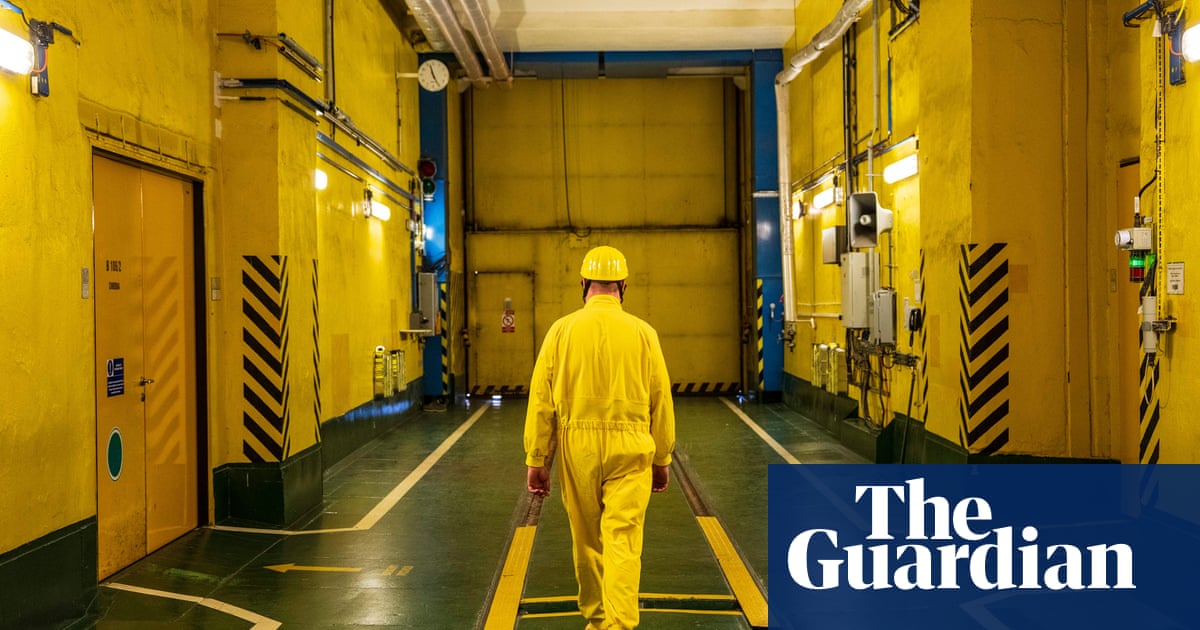There is something biblical about the fraternal relationship between the atomic bomb and the nuclear reactor. Both involve bombarding uranium-235 atoms with neutrons to produce a chain reaction via nuclear fission. Both were made possible in the same instant, at 3.25pm on 2 December 1942, when the Manhattan Project’s Enrico Fermi orchestrated the first human-made chain reaction in the squash court of the University of Chicago. “The flame of nuclear fission brought us to the forked road of promise and peril,” writes Tim Gregory.
The bomb came first, of course, but atomic dread coexisted with tremendous optimism about what President Eisenhower dubbed “atoms for peace”: the potential of controlled fission to generate limitless energy. As David Lilienthal of the US AtomicEnergyCommission observed, atom-splitting thus inspired a pseudo-religious binary: “It would either destroy us all or it would bring about the millennium.”
Nuclear optimism was shattered by the 1986Chornobyldisaster but, as the subtitle of his book advertises, Gregory is determined to bring it back. A nuclear chemist at Sellafield, where the Queen opened the world’s first commercial nuclear reactor in 1956, he’s a cheerleader for Team Millennium. Writing in a Promethean spirit of “rational and daring optimism”, this self-proclaimed “nuclear environmentalist” believes nuclear energy is the only viable route to net zero by 2050. “The nucleus could power the world securely, reliably, affordably, and – crucially – sustainably,” he declares.
Gregory is an excellent popular science writer: clear as a bell and gently humorous. If you want to understand the workings of fission or radioactivity, he’s your man. But he is also an evangelical pitchman whose chapters on the atom’s myriad wonders can read rather like high-end sales brochures. Radiation? Not a problem! Less dangerous, in fact, than radiophobia, “the irrational fear of radiation”. High-level nuclear waste? It can be buried in impregnable catacombs like Finland’s state-of-the-art Onkalo or, better yet, recycled through breeder reactors. Gregory wants the reader to learn to stop worrying and love the reactor.
Of course, there is a radioactive elephant in the room, which Gregory eventually confronts in the chapter We Need to Talk About Chernobyl. LikeThree Mile Island(1979) andFukushima(2011), the Soviet disaster caused reactor construction to crash. Europe built more reactors in the five years before Chornobyl than it has in the four decades since. The Fukushima meltdown spooked Germany into dismantling its entire nuclear programme. Whereas France, which has one-eighth of the planet’s 441 active reactors, currently generates two-thirds of its electricity from nuclear, Germany produces none, cancelling out its gains from renewables and making it painfully reliant on Russian gas. Gregory argues that the construction of reactors like Hinkley Point C in Somerset runs behind schedule and over budget because we’ve lost the habit, even as China and South Korea streak ahead.
To Gregory, all this is a tragic case of radiophobia. Only around 50 fatalities have been directly attributed to radiation from Chornobyl, while the official death tolls for Fukushima and Three Mile Island are one and zero respectively. Roll them all together and the same number of people are lost roughly every three minutes to air pollution caused by burning fossil fuels.
No doubt, the kneejerk rejection of nuclear energy can be ignorant bordering on superstitious, but safety concerns demand more space and consideration. Oddly, Gregory doesn’t mention Serhii Plokhy’s 2022 bookAtoms and Ashes, which explains how the Fukushima disaster could have been much worse if not for the courage and judgment of a few key officials. More offputtingly, he attacks renewable energy with roughly the same arguments used by rightwing critics of net zero, warning of “energy scarcity, industrial wind-down, and food insecurity” if we choose wind and sun over good old uranium-235. But surely it is not a zero-sum game?
After a while, Gregory’s relentless boosterism begins to lose its persuasive power and he sounds rather like the blithely confident scientist in the first act of a disaster movie. Even though I’m personally convinced that anybody focused on the climate emergency would be foolish to dismiss nuclear out of hand, I suspect that sceptics may require an argument that sounds a little less like“Calm down, dear.”
Going Nuclear: How the Atom Will Save the World by Tim Gregory is published by Bodley Head (£25). To support the Guardian order your copy atguardianbookshop.com. Delivery charges may apply.
